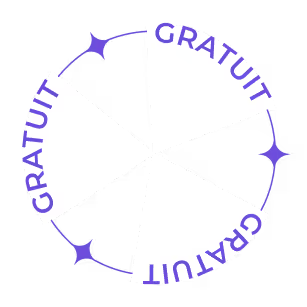Part 1: GEO — A new target for a new world
Classic SEO is a game between you, Google, and your competitors. But in 2025, a new layer emerged: generative AIs. They don't read your sites. They understand them. And they decide if you are worth quoting or summarizing.
The face of search engines has changed
Young people don't Google anymore. They ask ChatGPT. They're asking Perplexity a question. They want answers, not connections. And AIs, for their part, will draw their content from structured, clear, useful sites. If you are not: you are invisible.
Content is no longer an article, it's a database
Every line you write is analyzed by an AI. Not just for its shape, but for its content. Is that understandable? Structured? Are you a reliable source? GEO is writing as if an AI was going to have to quote your content word for word.
The tone: educational, synthetic, without bullshit
Forget high-sounding phrases and useless metaphors. The GEO style is: “I'll explain to you quickly and well what you need to know”. One idea per paragraph. Explicit titles. And above all, a real answer to a real user question.
Structuring for GEO — Architecture before words
You can have the Best content in the world... if it is poorly structured, you will never be quoted. In GEO, the plan is as important as the background. You should build your content like exam answers, not like marketing brochures.
Each H2 is a promise
The outline of your article is your resume. Each H2 should clearly say what the reader (or the AI) is going to learn. No vague titles. Affirmations. Angles. Hooks. Example? “Why Webflow is more efficient than WordPress for GEO”. Not “Comparison between CMS.”
Each paragraph should be a unit of meaning
AIs love to cut, summarize, extract. A good GEO paragraph is 3 to 5 lines long, self-sufficient, and starts with a clear sentence. You don't need to have read the intro to understand what's next. Everything is accessible, directly.
Links: internal, contextual, credible
Content without a mesh is a lost island. In GEO, you need to show that you are connected to an ecosystem. Internal links to your other articles (SEO audit, Webflow site, chatbot...), but also 1 or 2 serious external sources. Not to look pretty. To show the AI that you rely on solid matter.
GEO and Webflow — The lethal weapon to dominate tomorrow
Having good content is one thing. But hosting it on a CMS that follows the same logic is even better. And that's where Webflow becomes a strategic ally in a GEO logic.
Webflow structures natively for AIs
The clean code, the well-placed tags, the loading speed, the metadata... everything is already optimized. No need for 10 plugins and technical hacks. An article published in Webflow is already structured to be read, understood and classified by an AI.
The most agile CMS to respond to new requests
An AI will sometimes capture information... but not all the context. Thanks to Webflow, you can create a complete thematic cluster around a subject (GEO, for example), in a few clicks. Add a section, a page, an extension of the cocoon? Easy. It is this agility that makes the difference.
GEO + Webflow + Taram Content = Cocktail of Domination
At Taram Group, each article is designed with a double hat: classic SEO and SEO of the future. Our wireframes are designed to host GEO content. Our articles are designed to be summarized, cited, understood. And our customers? They are already reaping the benefits of content that is rising everywhere: Google, ChatGPT, Perplexity, LinkedIn. That's the GEO effect.
Conclusion: GEO is not a fad, it's an earthquake
It's not a technique. It is not a tool. It's a new way of thinking about web content.
You have two choices: continue to write articles optimized for 2015 algorithms... or move up a gear. GEO is optimization for response engines. Those who are already there, and those who are coming.
We, at Taram Group, have made our choice. And you?










